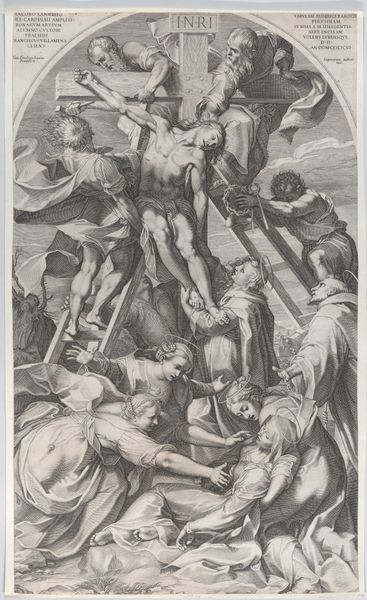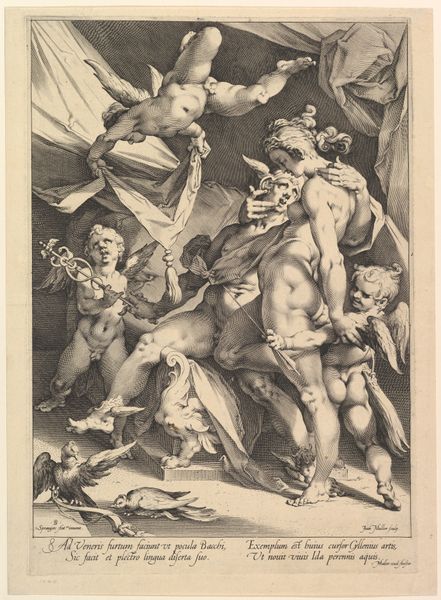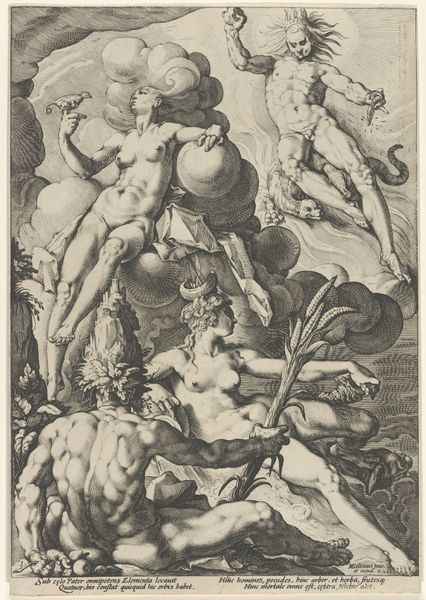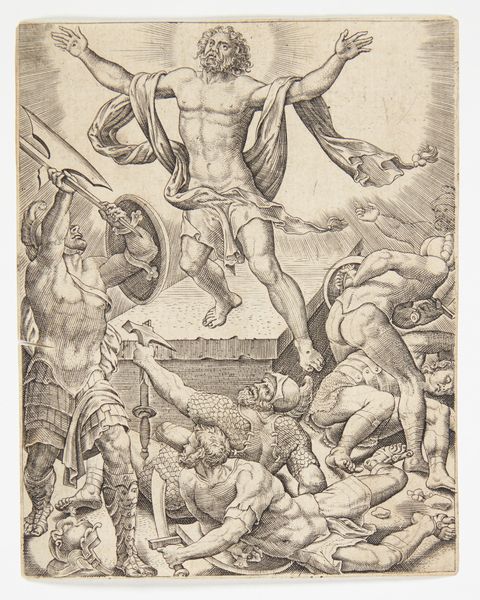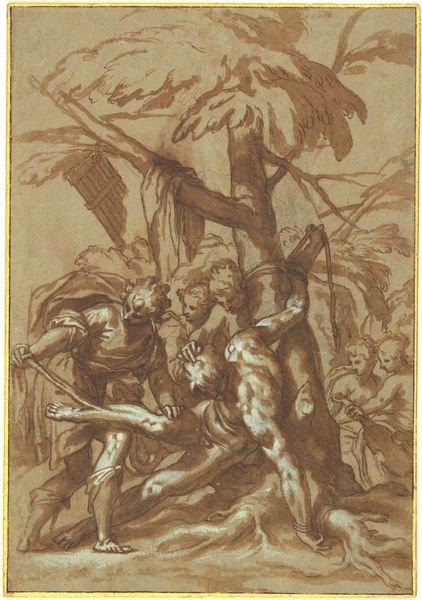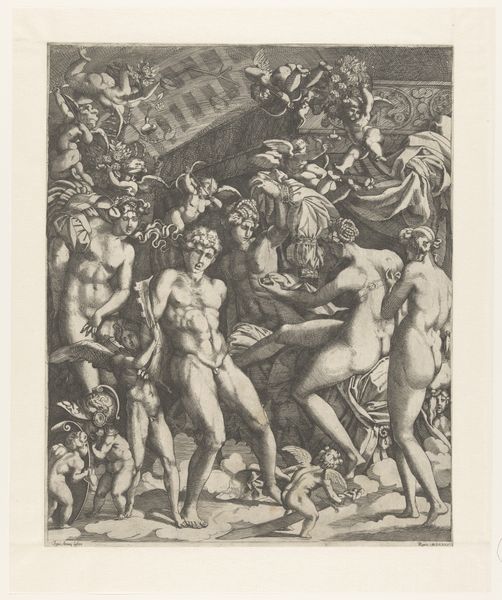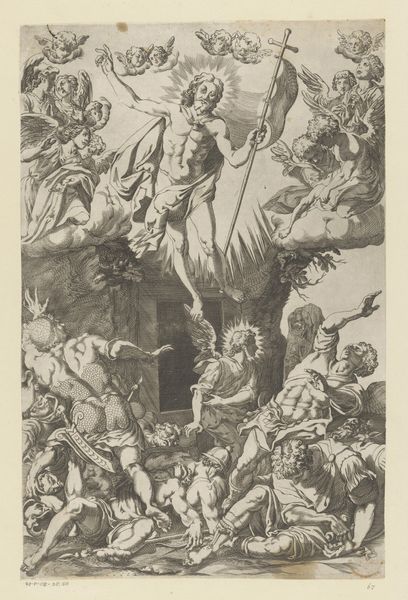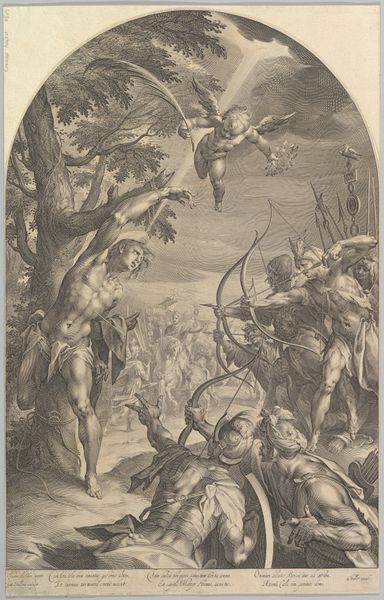
print, engraving
#
narrative-art
#
baroque
# print
#
figuration
#
history-painting
#
engraving
Dimensions: Sheet (Trimmed): 21 in. × 15 9/16 in. (53.4 × 39.5 cm)
Copyright: Public Domain
Curator: Let's turn our attention to "The Descent from the Cross," an engraving created sometime between 1615 and 1631. Editor: Immediately striking, isn't it? The stark chiaroscuro really amplifies the drama of the scene, focusing on the pain and grief. It feels like a moment suspended in time. Curator: Absolutely. Images of the Deposition held significant weight during the Counter-Reformation, particularly within the Habsburg territories, and this one really showcases that intensity, a deliberate appeal to the viewer’s emotions. Engravings like this one played a crucial role in disseminating religious ideology through visual imagery during this tumultuous period. Editor: Note how the figures form almost a pyramid, anchored by Mary at the base. It reinforces her symbolic role as both grieving mother and the foundation of the Church, doesn’t it? The ladders, the tools used to remove Christ - everything feels significant. Curator: Precisely. These types of works served a didactic purpose within their religious context. Each figure's expression, from the quiet mourning of Mary Magdalene to the physical struggle of those lowering Christ's body, underscores theological and moral lessons. The print served to instruct, to remind viewers of the sacrifices and suffering at the core of their faith. Editor: The "INRI" inscription above, so centrally placed. We often forget its political dimension, labeling Jesus' alleged crime of claiming kingship. The sign is the key for a much broader cultural conversation around injustice and authority. Curator: The inscription connects it to broader patterns of representing the Passion of Christ, certainly. This wasn’t simply a devotional image. The format allowed this kind of iconic imagery to circulate and be used to buttress the prevailing structures of power and belief. Editor: It gives us a lens to understand a particularly important subject matter that holds significance far beyond just artistic skill and history, doesn't it? Curator: Agreed. Considering that the Baroque embraced drama to move the public, it all comes together here to paint the picture of a complex world with religious narrative.
Comments
No comments
Be the first to comment and join the conversation on the ultimate creative platform.
